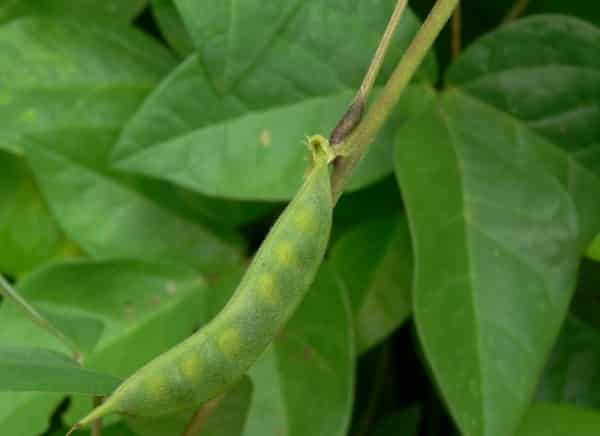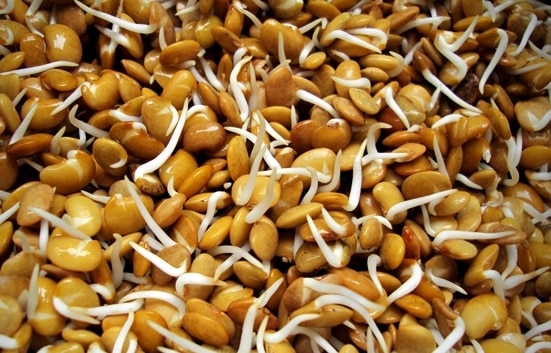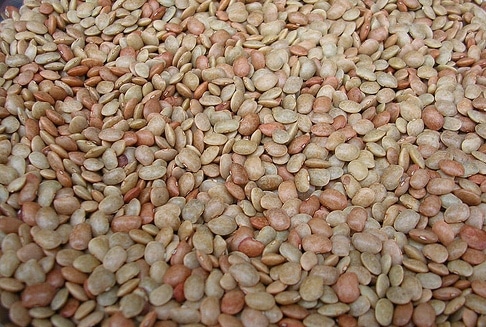Horse Gram Farming Guide:

Introduction of Horse Gram: – Horse gram is one of the oldest pulse crops cultivated and consumed in India since centuries whose botanical name is “Macrotyloma uniflorum” and known as “Kulthi” in Hindi. This legume crop is native to the tropical regions of Africa and south Asian subcontinent. Horse gram is mainly cultivated in south India. Horse gram can be used in cooking’s and can be eaten as fresh sprouts. This grain is packed with high protein and this why race horses are fed with this pulse gram and became “horse gram”. This crop is mostly grown in dry lands. As these beans are having great nutrition values, these are uses as cattle feed.
Health Benefits of Horse Gram:- Following are the health benefits of horse gram.
- Horse gram aids in digestion.
- Horse gram helps in weight loss.
- Horse gram regulates blood sugar levels in diabetics.
- Horse gram helps in promoting sperm count in men.
- Horse gram helps in irregular menstrual cycle by boosting hemoglobin.
- Horse gram helps in relieving constipation.
- Horse gram helps in preventing the formation of kidney stones.
- Horse gram soup is a natural remedy for common cold, fever & bronchitis.
- Horse gram widely used in ayurvedic medicine to treat number of health disorders.

Horse Gram Main Production States in India:- South Indian states.
Local Names of Horse Gram in India:- Horse Gram (English), Kulthi / Hulthi (Hindi), Kuleeth (Marathi, Gujarati), Kolatha (Oriya), Kudu (Tulu), Kuleetu / Kulith (Konkani), Kulthi-Kalai (Bengali), Ulavalu (Telugu), Kollu (Tamil), Mudhira (Malayalam), Hurule (Kannada).
Improved Varieties of Horse Gram in India:- Usually, Hybrid varieties of the seed varies state to state. Here are some of the varieties cultivated in India. CO-1, VL Gahat 1, VL Gahat 8, VL Gahat 10, VL Gahat 15, VL Gahat 19 , CRIDA 18R, CRHG-01, CRHG-02, CRHG-03, CRHG-04, KBHG-1,BJPL-1,AK-42(C), PHG-9(C) and AK-21(C).
Climate Required for Horse Gram Farming:- Basically, both tropical and sub tropical climatic conditions are suitable for horse gram cultivation. This grain crop is a drought resistant, so mainly this crop is cultivated in low rainfall areas. Most of the farmers cultivate this crop as rainfed crop in dry agricultural lands. The crop requires low to moderate annual rainfall of 500 mm to 700 mm. The optimum temperature for its growth is 20°C to 34°C.
Soil Requirement for Horse Gram Farming:- Horse gram can be cultivated on wide range of soils. However, black cotton soils, deep red loam and clay loam paddy soils are the best for its cultivation. Even stony soils can be used for its cultivation. The greatness of horse gram crop is, it can be cultivated in poor soils where other crops don’t grow. Highly acidic or alkaline soils are not suitable for its cultivation. If the cultivation purpose is for quality seed production, soils with neutral pH must be selected. Adding organic matter in the soil leads to production of vigorous seed.
Land Preparation in Horse Gram Farming:- Land should be prepared to the fine tilth by giving 3 or 4 ploughs. Weeds and previously grown crops leaves and stems should be cleared in the field. Based on the cultivation practices, field should be made with 1 feet wide ridges & furrows (or) make beds and channels of 4 feet x 6 feet. Application of well rotten farm yard manure (FMY) will result in vigorous growth of the seeds.
Seed Selection and Seed Rate in Horse Gram Farming:- For better quality production of seeds or grains, seeds must have genetic purity and should be bought from an authentic source. For good field stand, seeds must be vigorous and checked for hardness, immature, shrunken, deformed & diseased seeds. Generally seed rate depends on the seed variety and an average seed rate is about 35 to 40 kg per hectare.

Seed Sowing in Horse Gram Farming:- The seeds should be sown @ 1.5 cm to 2 cm depth with a plant to plant distance of 10 cm & 30 cm between rows.
Seed Treatment in Horse Gram Farming:- Before sowing the seeds, make sure to remove the damaged or seeds that are not having good quality. Treat the seeds with fungicides for reduce any seed borne diseases. Thereafter, seeds should be treated with rhizobium. For seed treating process, contact your local agriculture department.
Propagation in Horse Gram Farming:- Propagation is done through seeds.
Manures and Fertilizers in Horse Gram Farming:- 5 to 6 tonnes of well rotten farm yard manure or compost should be added along with basal application of 20 to 22 kg of urea & 60 to 65 kg of super phosphate per acre land.
Irrigation in Horse Gram Farming:- To produce a quality seeds, horse gram field must be monitored regularly for any water stress or drought conditions. Frequent irrigations should be given to keep the soil moisture, In case of water stress, this crop produces low vigor hardy small seeds and yield will be less due to flower shedding. Irrigation should be given immediately after sowing the seeds. Next life irrigation should be given on 3rd day. Subsequent irrigations should be carried out whenever the field becomes dry or on need basis. Make sure to irrigate the field especially at the time of flowering, pod forming and seed development stages.
Weed Control in Horse Gram Farming:- Manual weeding and chemical weeding can be carried out to control the weeds in horse gram crop. Within 3 days of sowing & irrigation, weedicide of basalin should be sprayed by dissolving 2 ml per liter of water to control the early growing weeds. For post emergence of weeds, manual weeding should be carried out after 2 weeks of sowing.
Pests and Diseases in Horse Gram Farming:- Following are the pests and diseases control measures in horse gram farming.
- Stem fly: To control this pest, 2 sprayings of quinalphos @ 2 ml per litre water. The 1st spray should be followed by a spray 10 days later.
- Aphids, Leaf hopper and Whitefly: To control these pests, Methyldematon, Dimethoate or Phosphomidan @ 2ml/liter of water should be sprayed.
- Mosaic,Leaf crinkle and Leaf curl : To control these, affected plants should be rouged out as and when they appear.
- Root rot wilt: To control this disease, drench the affected area with 0.1 % Bavistin solution.
- Cercospora & Powdery mildew: Spraying 1 % Bavistin solution will control this disease.
Harvesting of Horse Gram:– Horse gram crop becomes ready for harvesting when pods turns from green to straw colour. Harvesting should be done in clear sky conditions as rain may damage the seed crop. Seed crop can be harvested by using sickles. The cut plants should be spread on threshing floor to dry for 1 or 2 days. By beating with sticks, seeds can be separated from the pods. Cleaned seeds should be allowed to dry for some time to reduce the moisture content for best storing. Separated dry pods can be used as cattle feed.
Yield of Horse Gram:- As there are many improved varieties of horse gram seeds, this basically depends on cultivar and farm practices. An average yield of seeds is about 700 to 900 kg/hectare can obtained with improved varieties. An average yield of green fodder is about 1000 kg/ha can be achieved.
Bottom Line:- This crop is excellent for small farmers to generate good revenue with low investment.
If you want to know about Sheep and Goat farming business: Read Here.
Excuse me sir’s r madam’s I have a doubt that how we marketing product which are produced from green house r polyhouse.please explain.
You need to contact flower market agent, fruit market agent..